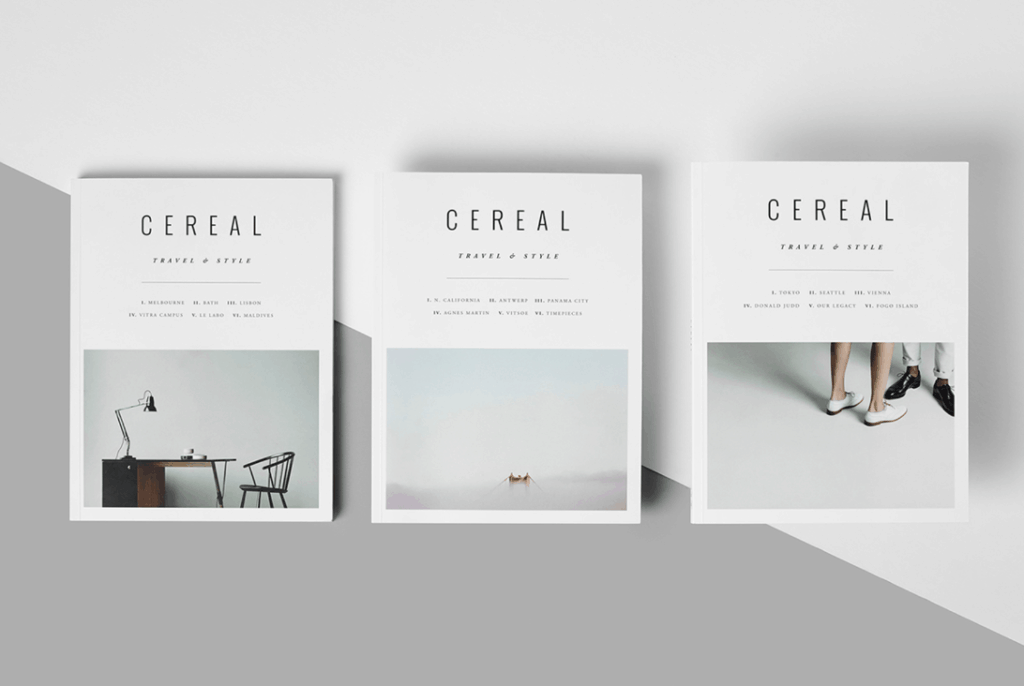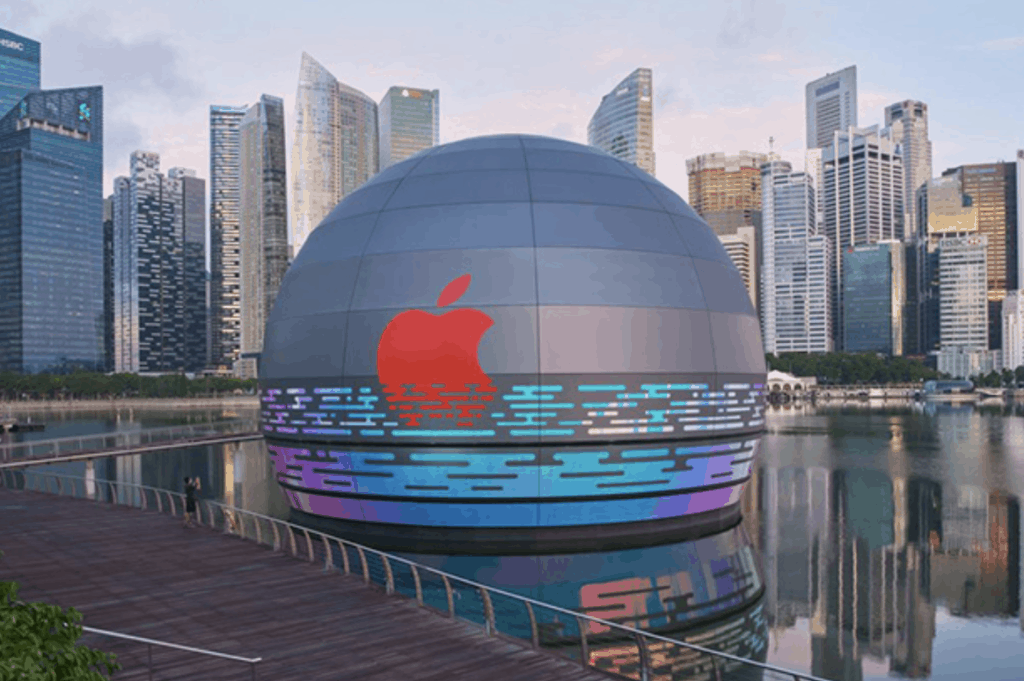What is the “Less is More” approach?
Think Minimalism. Just take a look at the latest designs in product, logo, web and even interior and architecture — everything is slowly gravitating toward a more minimalistic look and feel. Given that branding and marketing is all about storytelling, this makes the concept of creating and communicating messages in the simplest and most minimalistic way important, and in some ways, attractive even. With its abundant use of white space that lets the design breathe, along with typography that’s easy-on-the-eyes, minimalist advertising helps break through the clutter (Source: gingercup.com).
Less is More in design
Take UK-based travel and style magazine Cereal for instance, which adopts a highly minimalistic style in its branding and design. From its editorials to its photography, the Cereal publication centers around clean lines, white spaces, neutral colours and a photo style that is consistent with their brand (Image: thelifestyle-files.com).

When it comes to minimalist logo designs, just look at brands like Nike, Louis Vuitton and the likes — and if you want to add a pop of colour, enter Airbnb (Image: looka.com). Logos are the face of a brand, so you’d want it to be something impactful and memorable, you’d want it to leave an impression. That is why minimal logos are the way to go, because they are uncomplicated, easy to remember, and recognisable from afar.

Less is More in advertising
Like it or not, our brains subconsciously appreciate simplicity. That’s because it’s clean, simple, and easy to digest. As such, many marketers have started to take a more minimalist approach when designing their marketing campaigns.
The ‘True Colors’ print campaign by Faber-Castell illustrates a form of minimalist advertising. Being an art and drawing supply company, Faber-Castell’s aim was to bring out the quality of their colour pencils in their creatives. So what better way to do so than by letting the colours pop and speak for itself? (Image: ktratcliffe.wordpress.com)

For advertisers, removing unnecessary clutter from the main message or design is very important, because it tells people where to focus their attention on, which helps them to better digest it. So if there isn’t a need for words, don’t put it in.
Speaking about minimalism and simplicity, we cannot not bring in the brand which epitomises this concept itself — Apple.
Case study: Apple
Apple is no stranger to this post-digital era of smartphones and technology. It is probable that at least half the people in your social circles (maybe even yourself!) owns an Apple product. According to Apple iPhone statistics, 38 million iPhone units were sold in Q2 2019 alone, capturing 11% of the global smartphone market share! Furthermore, just as of August 2020, Apple has also been named as the first American corporation to surpass $2 trillion in valuation. So what is the secret to their success?
Product
Apple is unquestionably one of the most innovative companies to date, especially in the realm of product innovation. From the products’ slim fit and the simplicity of their designs, to the entire packaging and unboxing experience, it’s no wonder many other brands have designs that were first inspired by Apple.
Advertising
Then comes advertising. Just click into and view some of Apple‘s advertisements. You’ll realise that the brand’s videos aren’t overly promotional and they don’t mention any deals, promotions or even prices. In fact, they focus more on inspiring their users to live a life that is empowered by their products, portraying how Applefits in with the lifestyle and personality of its users.
Customer experience
Besides its products that sell, Apple has also managed to nail the customer in-store experience, as well as the other experiences found across its different touchpoints. This is largely because of Apple’s belief that consumers are not just buyers, but real people with dreams and ambitions of their own; and so it creates products and experiences that empower them to achieve those dreams. Just walk into any Apple store (tip: try its newest one at MBS) and you’ll be greeted with a minimalist interior design, spacious store configuration, neatly displayed products for you to try out and interact with, and a proactive and friendly team of staff (Image: bangkokpost.com).

However, the experience doesn’t just stop there. Once you purchase an Apple product, it is highly likely that you will purchase another, and another — that’s how Apple converts its customers into fans. Reason being, their clean, minimalist and easy-to-navigate interfaces are addictive. Coupled with the fact that Apple has managed to single-handedly build an entire ecosystem of its own, by seamlessly connecting and integrating its suite of devices, it’s no wonder many Apple users are loyal to the brand (with some even swearing by it). Once you’re in, it’s hard to come out.
Turning customers into evangelists
As a result, many Apple users have vouched for the brand, which is one of Apple’s biggest marketing strategies — turning customers into brand evangelists. By delighting its customers each time through its innovative products and quality customer service experiences, the organic word-of-mouth that it generates has proven to be effective, especially given that people tend to be more receptive to product recommendations from a friend or fellow user, rather than from the brand itself. When even a simple and age-old marketing tactic like word-of-mouth can grow a company into $2 trillion worth in value, less truly is more.
How do I start?
Know your audience
Despite the saying “less is more”, a lot of research and planning actually goes into executing such a simple concept. Start by getting to know your audience — make it your goal to have a deeper understanding of their needs, preferences, personalities and motivations. This will go a long way in helping you to craft the right messaging and creative to break through the clutter.
Quality, not quantity
As you can tell from the “less is more” approach, the ultimate goal is to get your message across to your audience in a simple, direct and effective way. So instead of thinking about whether you are churning out enough content all the time, perhaps it’s time to focus more on the quality of your content. What some marketers fail to realise is that most of the content they create ends up being under-utlised. So focus more on how to make your content impactful and get it out to the right kind of audience — in other words, how to make it work for you.
Keep it simple
Lastly, avoid cluttering your content, overloading it with information, or bombarding it with a thousand and one things — keep it clean, less is more.
If you are exploring a rebranding, trying to come up with more minimalist creatives, or are struggling to apply this philosophy to your campaigns, feel free to drop us a message and we’ll be happy to help! 🙂
— —
Hero image: Hugo Agut tugal, Unsplash
